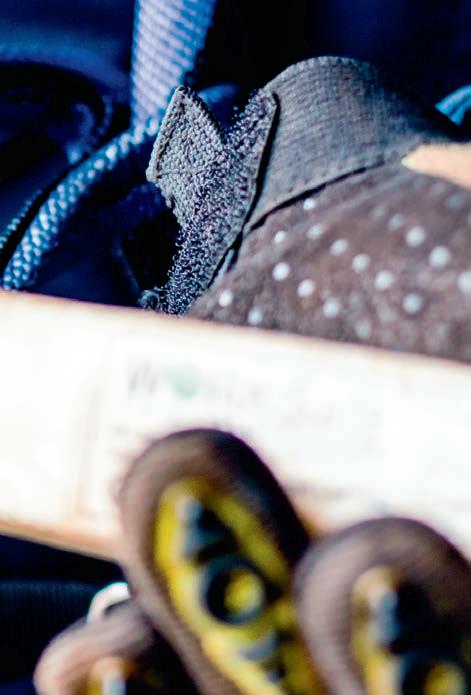
4 minute read
Working at Heights Association
FALL PROTECTION INSPECTION AND CERTIFICATION: MORE THAN JUST A TICK-BOX EXERCISE
The Working at Height Association discusses why inspections can’t be missed.
ANNUAL INSPECTIONS ARE VITALLY
important. Not only are they a regulatory obligation but, ultimately, they help save lives. That’s why it pays to partner with professionals with the necessary experience and competency to inspect and certify your fall protection equipment. Can you afford not to?
There is a wide spectrum of potential issues that may arise when inspecting fall protection systems and personal protective equipment (PPE), all of which need to be addressed. After all, by its very nature, fall protection equipment can be exposed to the harshest conditions.
It’s also important to remember that the general state of PPE and systems can often be influenced by the competency of the person that has used the system and how frequently it has been used.
APPROACH TO QUALITY INSPECTION
Some initial questions to consider when inspecting systems and PPE should include: • Has the system been accurately installed within the manufacturer’s guidelines? • Has it been configured properly with the right components? • Are calculations that help ensure safe levels of load absorption accurate?
If the answer to any of the above questions is “no”, then those working at height could be exposed to an unacceptable level of risk. Some key issues that quality inspection should cover include: • Inspection of all energy absorbers. • Checking the cable for damage/signs of wear and tear.
• Any signs of corrosion. • Re-tensioning of the cable if required. • Inspecting lanyards and harnesses for cuts, fraying or breaks in the stitching. • Looking for signs of damage to fittings.
POTENTIAL ISSUES
By no means does quality inspection stop there. Sometimes, upon scrutiny of the system, an inspection may reveal that the system and equipment in place is not correct for the application. The original design process should have identified the key access areas needing to supported by a system and included PPE selection criteria appropriate for the type of work needed to be carried out.
It’s imperative that the PPE used is compatible with the system in place and that, in combination, they create the safest solution for the tasks required.
Understanding the difference between a fall restraint system which prevents you from falling versus a fall arrest system that protects you after you fall is important when determining the risk factor and how it should be addressed, so it is imperative that the PPE used by an operative is suitable for the type of system they are connecting to. Even understanding how a ‘fall restraint’ system falls under ‘fall arrest’ as a work position informs PPE selection. Remember, as well as inspecting and certifying it, a high-quality fall protection expert should also be able help you specify and install the right equipment at the very outset of a project.
Systems exposed to extreme weather conditions can degrade over time, and while, to a certain extent, this is an expectation, how quickly this occurs is
dependent on the quality of the materials that constitute the fall protection equipment.
Not only does this reinforce the importance of regular quality inspections and re-certification, but it should also be a timely reminder to invest in high quality equipment and solutions to mitigate accelerated environmental degradation, maintain safety standards, and, subsequently, reduce maintenance costs. While the initial financial outlay may potentially be higher, ultimately you will likely reap the benefits of a lower total cost of ownership.
GOOD PREPARATION BEGINS WITH QUALITY TRAINING
While the responsibility for the safety for those that work at height sits with the person conducting a business or undertaking (PCBU), ultimately, the operators themselves should be able to take some responsibility for their own safety.
Unfortunately, despite ‘training’, some people still lack the appropriate knowledge, experience and/or practical training required to be able to accurately identify whether the PPE or a fall protection system is safe to use. This is a major concern, as failure to do so properly could be lethal. That’s why quality appropriate application based education and training is often the best form of first defence.
REMEMBER THE FUNDAMENTALS
Having the right equipment in place and adhering to regular quality inspection and re-certification is important, but it counts for little without all required risk assessments and safety methods statements in place.
Even with annual re-certification, all equipment needs to undergo rigorous pre-use checks prior to accessing the work area. Organisations with employees that work at height can employ an external company to come in and check PPE and systems. Some will train people within the company to check equipment themselves. Either way, proper checks need to have been done before use.
MORE THAN JUST A TICK-BOX EXERCISE
Inspection and certification are critically important but, unfortunately, many still see it as a compliance issue, rather than the life-saving obligation that it is. There is a clear responsibility under the WHS Act to provide a safe workplace for your people, and ensuring systems to manage high-risk activities are intact, safe and fit for purpose is clearly covered under this obligation.
If you own, specify or use fall protection equipment, you have an ethical and legal responsibility to ensure that inspections are carried out in an accurate and timely fashion. Lives may depend upon it.
Not only are regular inspections vitally important and a regulatory obligation, ultimately they save lives. “The original design process should have identified the key access areas needing to be supported by a system, including PPE selection criteria. It pays to partner with professionals with experience and competency to inspect and certify your fall protection equipment.”











